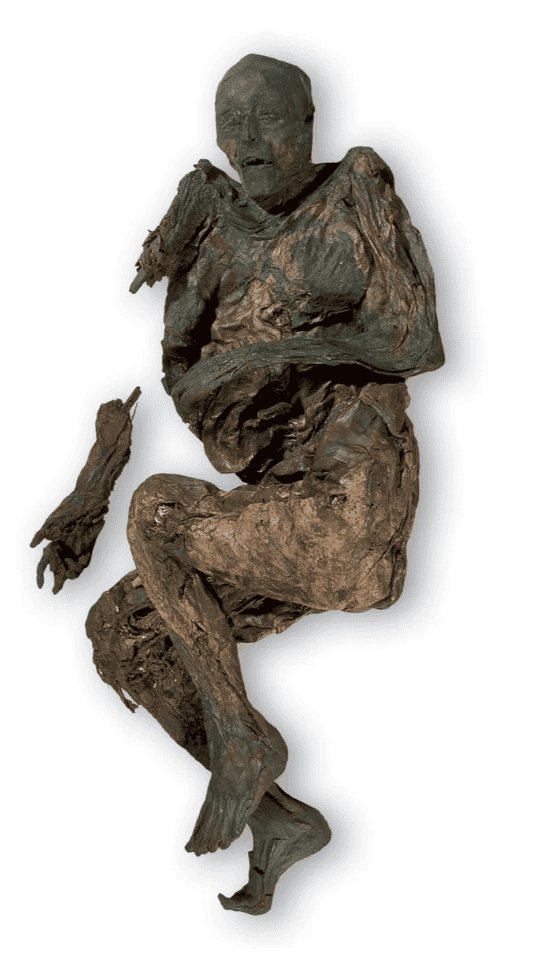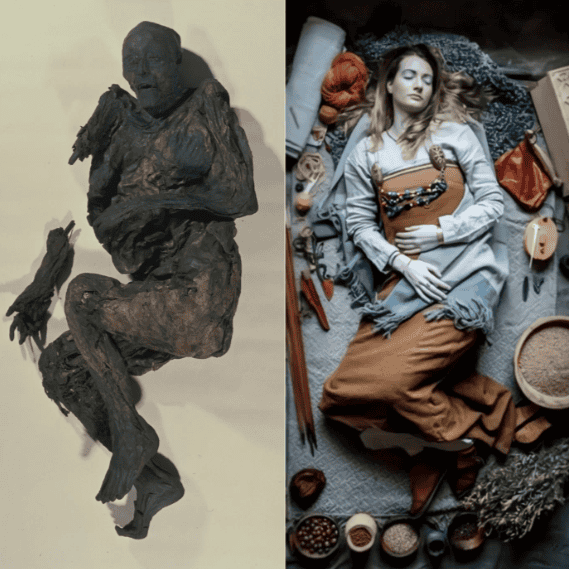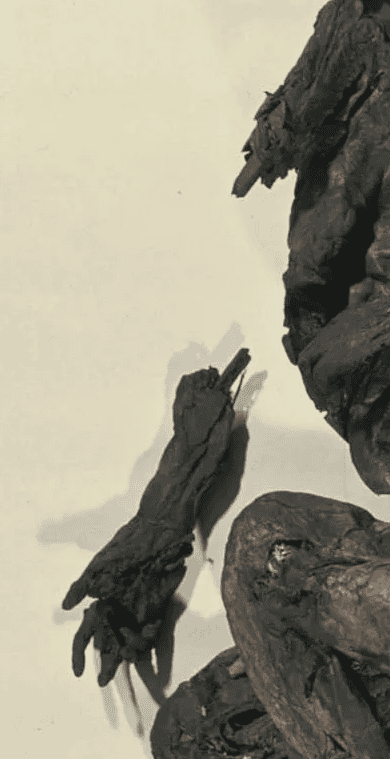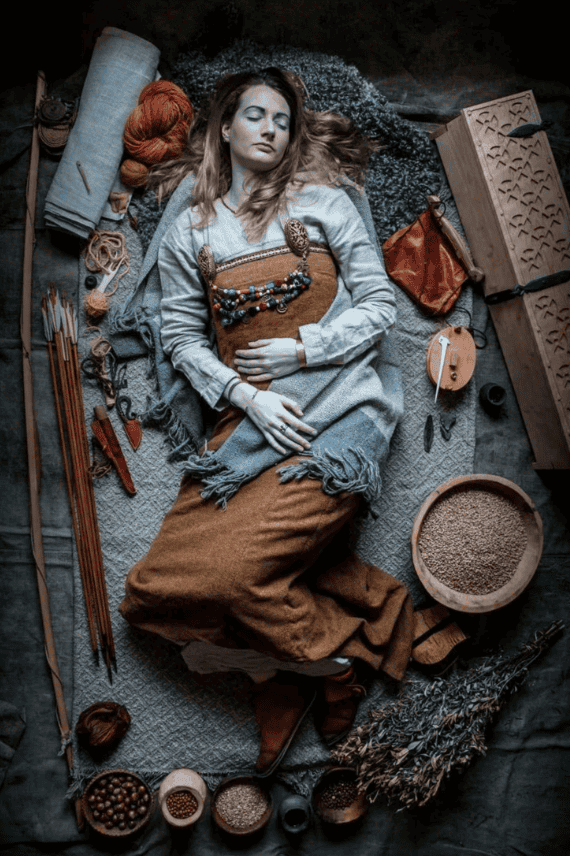In a quiet bog in Jutland, Denmark, the face of a woman from 2,000 years ago has resurfaced—timeless, mysterious, and incredibly well-preserved. Known as the Huldremose Woman, this Iron Age discovery continues to fascinate archaeologists and history lovers alike. And with modern technology, we are finally seeing her not just as a historical figure, but as a real human being.
A Window into the Iron Age

The Huldremose Woman was discovered in 1879 in a peat bog near Ramten, Denmark. Her body, remarkably intact, dates back to somewhere between 160 BCE and 340 CE. She was around 40 years old—considered elderly at the time—and likely met a violent end, possibly through ritual sacrifice. One of her arms was nearly severed, and like many other bog bodies found in northern Europe, she may have been intentionally buried in the bog as part of a spiritual tradition.
What makes her unique, however, is not just the condition of her remains—but what she was wearing.
Elegance That Endures

Unlike many bog bodies that were found naked, the Huldremose Woman was clothed from head to toe. Her wardrobe, preserved in the acidic, low-oxygen environment of the bog, speaks volumes about Iron Age fashion and craftsmanship:
-
A woolen skirt and scarf, originally dyed in vibrant colors—blue and red respectively—have now faded to brown but still tell stories of ancient dyeing techniques.
-
Two animal skin capes, one turned inside out and the other outward, perhaps for insulation.
-
A cape containing 22 patches, one of which held a bone comb, a blue hairband, and a leather-wrapped item—possibly charms or amulets.
-
A cord around her neck with amber beads and a wool cord in her hair.
-
An impression on her left ring finger suggests she once wore a ring, now lost to time.
Everything about her ensemble, down to the smallest bead, hints at a life rich in meaning—perhaps of status, ritual, or personal identity.
What Science Reveals
With modern tools, scientists have gained even more insight into her story:
-
Dietary analysis of her stomach contents revealed her last meal: rye bread.
-
Isotope testing of her hair suggested she may have traveled before her death, possibly from distant regions. This could indicate a ritual journey or seasonal migration.
-
Her body’s incredible preservation allowed researchers to study her organs, hair, and skin in astonishing detail.
Reconstructing Her Face: Bringing Humanity Back to History

Thanks to forensic facial reconstruction, artists and scientists have worked together to rebuild what the Huldremose Woman may have looked like. These reconstructions don’t just offer a visual—they breathe life into the past.
Seeing her face reimagined reminds us: this was not just an artifact. She was a person—with emotions, relationships, and a story we’re only beginning to uncover.
A Timeless Legacy
The Huldremose Woman now rests at the National Museum of Denmark in Copenhagen, where visitors can see her and her garments up close. Her story bridges two worlds: the mystery of ancient rituals and the beauty of modern discovery.

As we look into the eyes of her reconstructed face, we’re not just peering into the Iron Age—we’re meeting a woman who lived, dressed, walked, and died with a story worth telling.
Have thoughts on ancient history or bog bodies like the Huldremose Woman? Drop a comment below or share this story with fellow history lovers.
More detail on this Video below:


